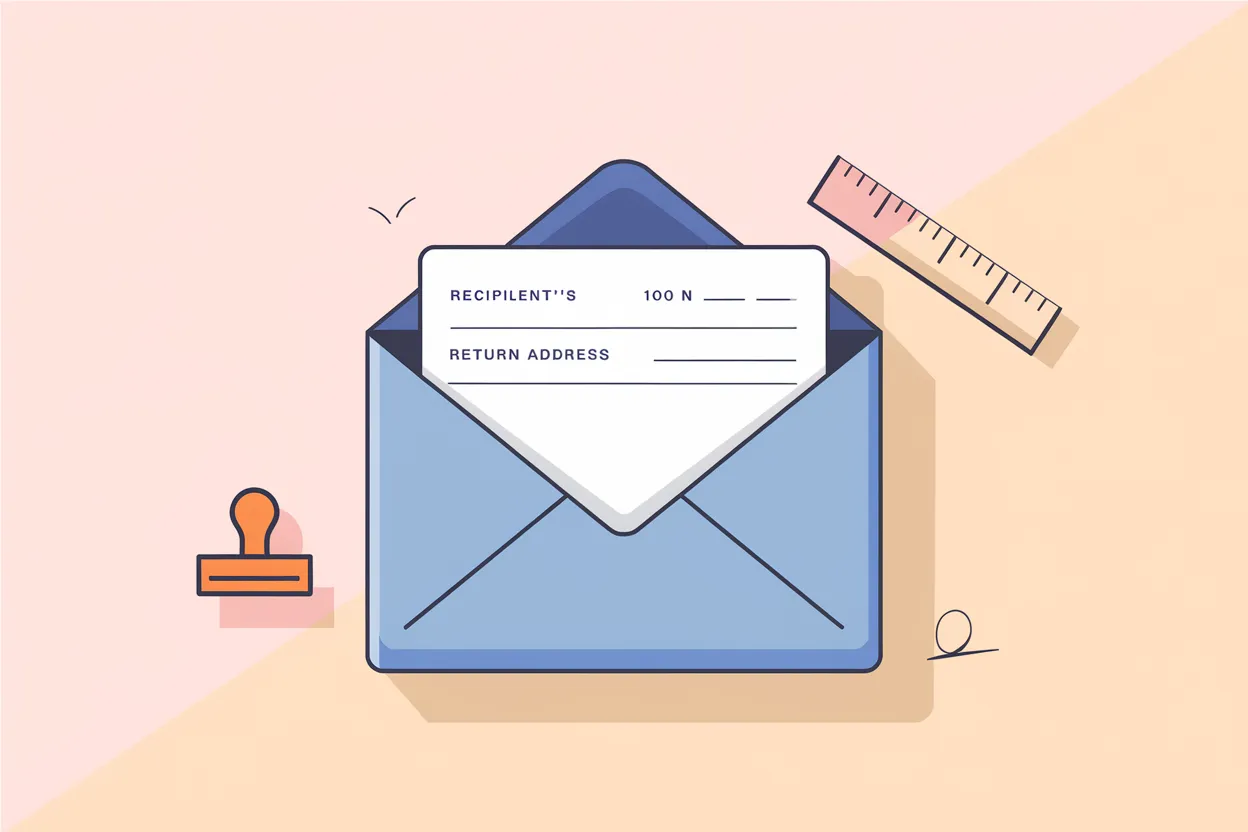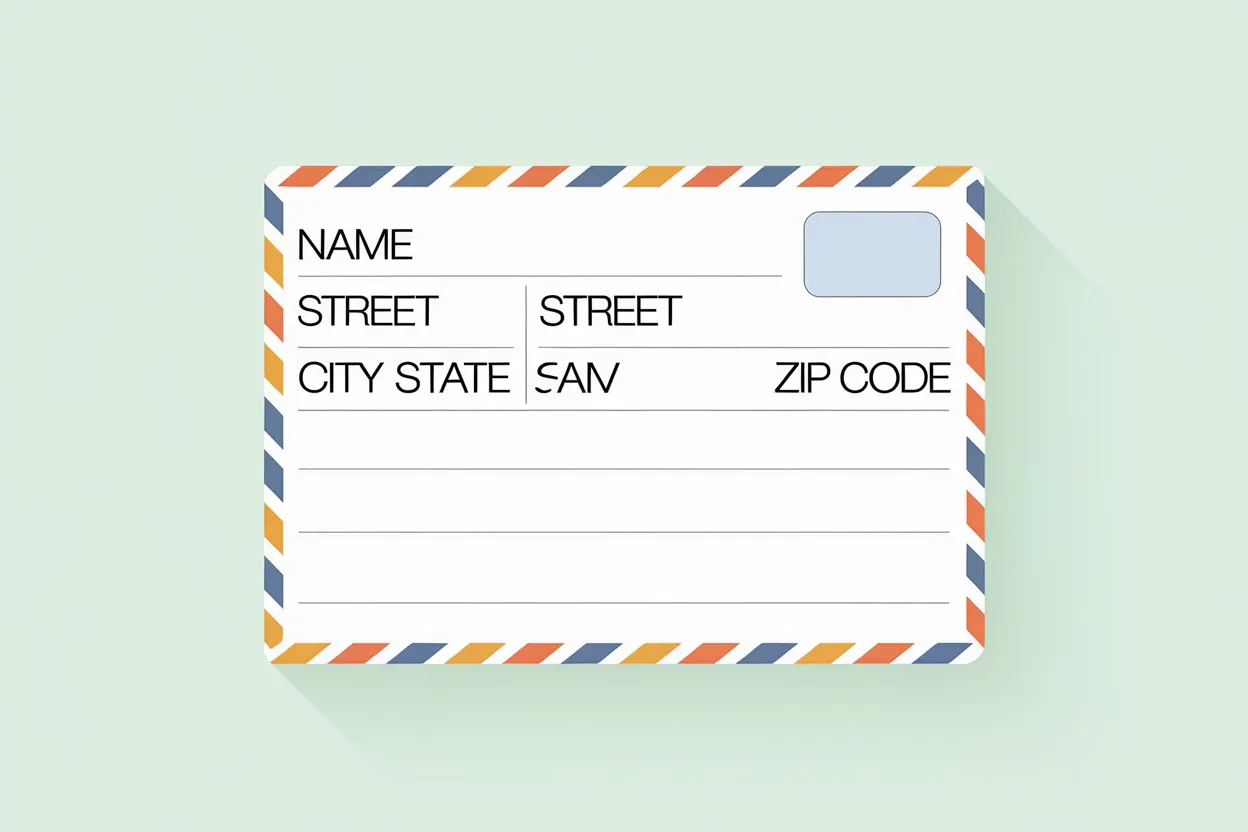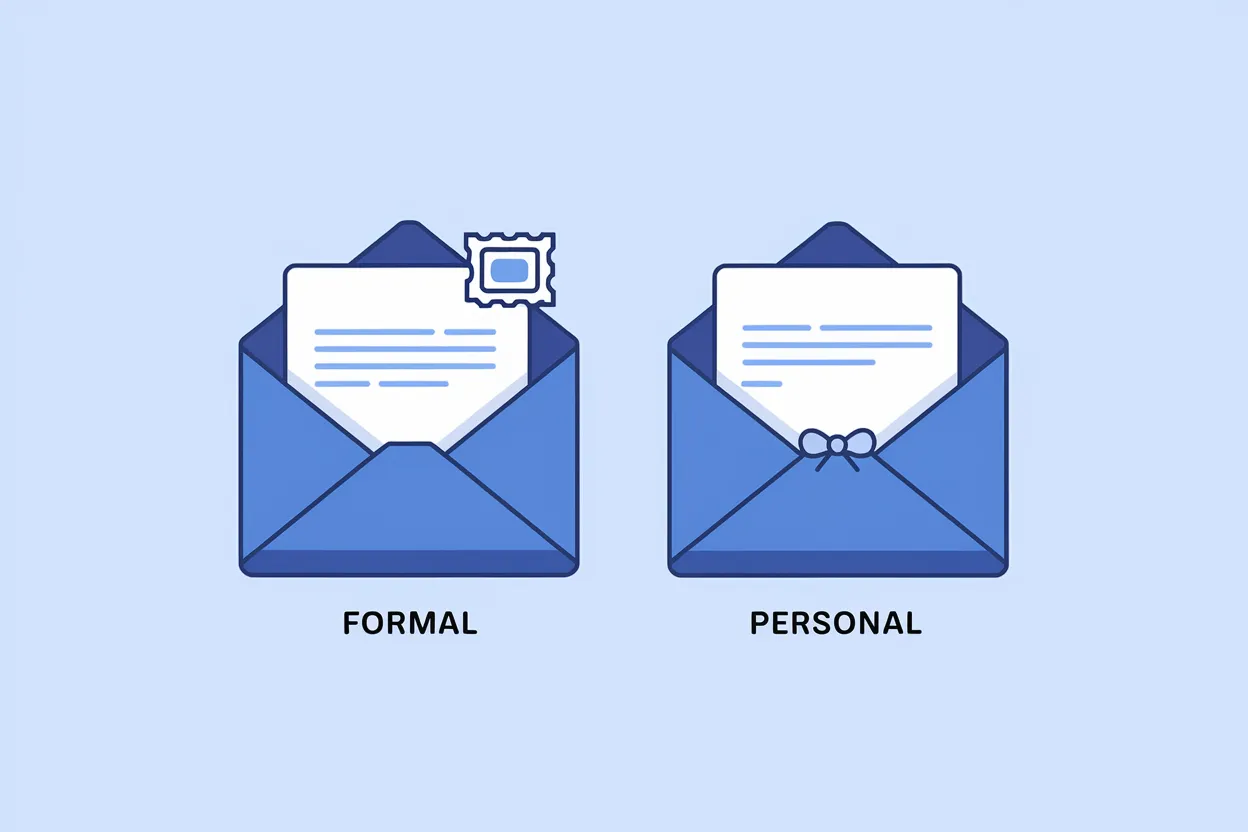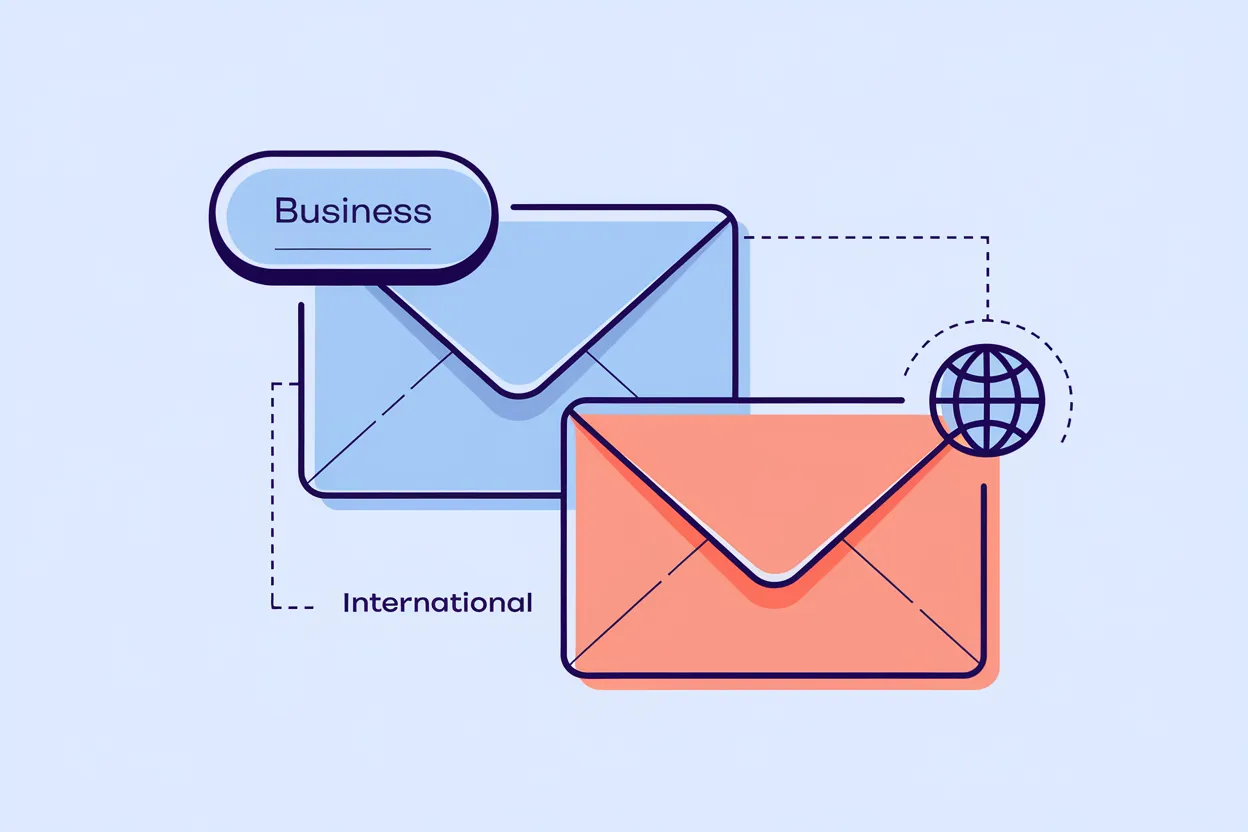Chat History
No chat history yet. Start a new conversation!
How to Address a Letter with Chat100.ai - Your Go-To Guide
Master the art of addressing letters and envelopes with ease, no login required!

Welcome! Let’s perfect your address formatting.
Explore the Key Features of Chat100.ai for Addressing Letters

How to Address a Letter on an Envelope
Get step-by-step guidance on placing the recipient's address on an envelope correctly, meeting postal standards effortlessly.

How to Write an Address
Learn the essential components of a properly formatted address, including street, city, state, ZIP code, and return address.

Formatting Help for Different Letter Types
Whether you're addressing a personal note or a formal business letter, we provide tips to ensure clarity and professionalism.

Tips for International and Business Addresses
Discover best practices for addressing letters to businesses or international recipients, including where to place country names.
How to Use Chat100.ai to Address a Letter
Step 1: Select Your Letter Type
Choose whether you're addressing a personal, business, or international letter to get tailored guidance.
Step 2: Follow the Formatting Instructions
Use our clear formatting tips to write addresses correctly on envelopes and letters.
Step 3: Verify and Send
Double-check your address for accuracy with our tips before sending it off with confidence.
Who Can Benefit from Chat100.ai’s Addressing Features
Individuals Sending Personal Letters
If you're writing to family or friends, ensure your letters reach the right place with our simple instructions.
Businesses Handling Professional Correspondence
Streamline your formal communication with properly formatted business addresses for professional letters and packages.
International Shippers
Avoid delivery delays by correctly addressing packages and letters for recipients abroad with our international tips.
Students and Job Seekers
Make your applications and correspondence stand out with correctly formatted envelopes and professional letters.
Feedback on How to Address a Letter with Chat100.ai
Chat100.ai made addressing envelopes for my business letters incredibly easy. Highly recommended!
Alex Johnson
Small Business Owner
Thanks to Chat100.ai, I never worry about incorrectly addressed letters. It's been a lifesaver for my applications.
Sophie Lee
College Student
The tips for international addresses are fantastic! My letters always get to their destinations without issues.
Rajesh Patel
Frequent Traveler
I love how simple Chat100.ai makes it to address personal letters. It's so user-friendly!
Martha Green
Retiree
Related Searches
Writing an address in a formal letter involves following a structured and professional format. Start with your address (the sender's address) at the top left corner, followed by the date. Below that, include the recipient's address. This should feature the full name of the recipient, their title or position, their organization (if applicable), and their full mailing address, including street, city, state, and postal code. Ensure there are no abbreviations unless they are widely accepted (e.g., 'St.' for Street). The precision and clarity of the address not only help the letter reach its destination but also contribute to the overall professionalism of your correspondence. Taking the time to write the address correctly ensures that your formal letter is well-received and leaves a positive impression.
How to write address in formal letter
Addressing a professional letter requires attention to detail and a respectful tone. Begin with the sender's address at the top, followed by the date. Next, include the recipient's name, title, and organization in the address section. Use a formal salutation such as 'Dear Mr. [Last Name],' 'Dear Dr. [Last Name],' or 'Dear [Title] [Last Name].' If you are unsure of the recipient's name, consider using a neutral greeting like 'Dear Hiring Manager' or 'Dear Sir/Madam.' Avoid overly casual language, and ensure all names and titles are spelled correctly. A well-addressed professional letter sets the tone for effective communication and reflects positively on the sender's attention to detail and professionalism.
How to address a professional letter
Including the sender and recipient addresses on a letter ensures clarity and proper delivery. The sender's address should appear at the top left corner, and it should include the full name, street address, city, state, and zip code. Directly below the sender's address, write the date in full (e.g., 'December 15, 2024'). The recipient’s address should follow, starting with their full name, title, and organization (if applicable), along with their mailing address. This format is standard for professional and formal correspondence. Including both addresses helps avoid delivery issues and ensures that the letter conveys professionalism and attention to detail.
Sender and recipient address on letter
When addressing a letter envelope, it's important to include both 'To' (recipient) and 'From' (sender) information for clarity and proper delivery. The recipient’s address should be centered on the front of the envelope. Include their full name, title, street address, city, state, and postal code. In the top left corner, write the sender’s address in a similar format. This allows the postal service to return the letter to the sender in case of delivery issues. Be sure to write neatly or consider printing the addresses to ensure legibility. Properly formatting 'To' and 'From' addresses enhances the professionalism of your correspondence and ensures it reaches the correct destination.
To and from in letter envelope
Writing an address on an envelope for post requires precision to ensure accurate delivery. Begin with the recipient's address, placing it in the center of the envelope. Include the recipient’s full name, their street address (or P.O. Box), city, state, and postal code. If sending internationally, include the country name in capital letters on the last line. The sender’s address should be placed in the top left corner or on the back flap of the envelope. Ensure all information is legible, and use block letters if handwriting the details. Correctly formatting the addresses helps postal services process your mail efficiently and reduces the chances of it being delayed or returned.
How to write address on envelope for post
In a formal letter, the sender’s address always comes first. This is typically placed in the top left corner of the letter, followed by the date. Directly below the date, you should include the recipient's address, starting with their name, title, and organization, and ending with their mailing address. This order provides clarity about who the letter is from and who it is intended for. The logical flow of sender’s address, date, recipient’s address, and salutation ensures your formal letter follows widely accepted conventions, making it appear professional and easy to understand.
Which address comes first in a formal letter
The sender’s address in a formal letter is typically placed at the top left corner of the page. This section includes the sender’s full name, street address, city, state, and zip code. In some cases, additional contact details like an email address or phone number may also be included. This information is essential as it allows the recipient to identify the sender and provides a return address for correspondence. Including a well-formatted sender’s address not only facilitates communication but also contributes to the professional presentation of the letter. Ensure that the address is accurate and free of errors to avoid any potential misunderstandings.
Sender's address in formal letter
Writing an address in an informal letter is simpler and less rigid than in a formal one. Begin with the sender’s address at the top right corner of the page, followed by the date. The recipient’s address is often omitted in informal letters unless it is necessary for clarity. Use a casual salutation such as 'Hi [First Name]' or 'Dear [First Name],' depending on your relationship with the recipient. While the tone is more relaxed, it’s still a good idea to ensure your address is clear and legible, especially if it might be needed for future replies. Informal letters prioritize personal connection over strict formatting but still benefit from thoughtful presentation.
How to write address in informal letter
Frequently Asked Questions about Addressing Letters
How do you properly address a letter?
Properly addressing a letter is a crucial step in ensuring your message is received with the respect and attention it deserves. Start by placing the sender's address at the top left corner of the letter or envelope, followed by the date. Next, include the recipient's name and title (if applicable), along with their address. Use formal salutations like 'Dear Mr. Smith' or 'Dear Dr. Johnson' for professional correspondence, while personal letters can use first names or informal greetings. Always confirm the recipient's preferred title and spelling to avoid mistakes. A well-addressed letter not only demonstrates professionalism but also builds trust and sets the tone for effective communication. Whether you're sending a job application, business inquiry, or a personal note, following these steps ensures your letter is respectful and impactful.
How do you address a letter format?
Addressing a letter format correctly involves organizing the key elements of your correspondence in a clear and logical order. Begin with the sender's address and contact details at the top left of the page, followed by the date. Directly beneath the date, include the recipient's full name, their title or position, and their address. Use a formal salutation like 'Dear [Title] [Last Name]' if the context requires professionalism. For informal letters, you can simply use the recipient’s first name. In the main body, maintain a structured flow with an introduction, body paragraphs, and a conclusion. End with a complimentary closing phrase like 'Sincerely' or 'Best regards,' followed by your signature. Formatting a letter correctly ensures that it appears professional, organized, and respectful, which is essential for making a strong first impression.
How to start a formal letter?
Starting a formal letter requires careful attention to tone and structure to ensure professionalism. Begin by including the sender’s address and date at the top of the letter, followed by the recipient's details, such as their name, title, and organization, if applicable. Use a formal salutation like 'Dear [Title] [Last Name]' to address the recipient respectfully. If you are unsure about their name, 'To Whom It May Concern' is an acceptable alternative, though personalizing the greeting is always preferred. Your opening sentence should clearly state the purpose of your letter, such as 'I am writing to inquire about...' or 'I am reaching out regarding...' This establishes the context and sets a professional tone. A well-crafted opening ensures your letter captures the recipient’s attention and conveys your intent effectively.
What is the formal way to address?
The formal way to address someone in a letter depends on the context and the relationship between the sender and the recipient. Start by using an appropriate title such as 'Mr.,' 'Ms.,' 'Dr.,' or 'Professor,' followed by the recipient’s last name (e.g., 'Dear Dr. Smith'). Avoid using first names unless you have a pre-established informal relationship with the person. If the recipient’s gender or title is unknown, consider using a neutral greeting like 'Dear [First Name] [Last Name]' or 'Dear Hiring Manager.' Always confirm the correct spelling of the recipient's name and their preferred title to avoid errors. A formal address sets the right tone and reflects your professionalism, whether the correspondence is for a job application, a business inquiry, or official communication.
What is the correct way to format an address on an envelope?
Place the recipient's address in the center, with your return address in the top-left corner. Follow postal standards for spacing.
How do I write an international address?
Include the recipient’s full address, city, postal code, and country name at the bottom, in uppercase letters.
Can I use abbreviations in addresses?
Yes, common abbreviations like 'St.' for Street and 'Apt.' for Apartment are acceptable, but avoid excessive shortening.
What if I don’t know the recipient’s ZIP code?
You can look up ZIP codes online using the recipient’s city and state for accuracy.
How do I address a business letter?
Include the recipient's name, title, company name, and full address. For formal letters, add 'Attention' if needed.
Does Chat100.ai require registration to use?
No, all features are free to use without any need for login or registration!